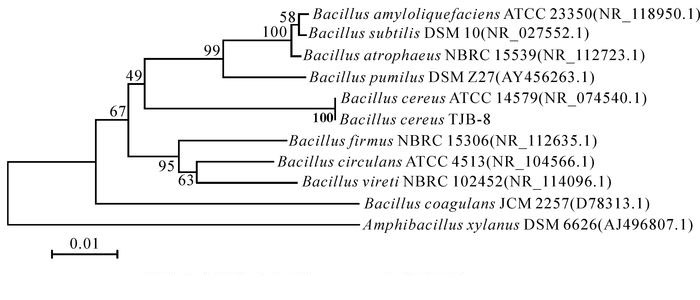-
人们越来越意识到使用化学农药的弊端,并开始积极寻求其他防治手段来替代或减少化学农药的使用。生物防治因其高效,对环境、生态及人类健康安全,无毒等优点得到了广泛重视和关注,并成为了目前植物病害防治的热点。目前,很多有益微生物及其代谢产物被成功应用于植物病害的生物防治中,包括真菌、细菌、放线菌、酵母等。在这些生防微生物中,芽孢杆菌属Bacillus是近年来生物防治研究的一个重点方向[1]。芽孢杆菌广泛分布于自然界各种不同环境中,包括土壤、水体、植物体表面及体内等。其生长速度快、营养需求简单、抗逆性强、易于在植物体表面定殖与繁殖、抑菌谱广、对人畜无害、不污染环境,且制剂生产的工艺简单、制剂稳定、储存时间长、施用方便,不仅符合人们对环境和健康的需求,而且为农林业的可持续发展提供了保障[1-2]。大量的研究表明:芽孢杆菌防治植物病害的作用方式多种多样,主要有拮抗作用、竞争作用、溶菌作用、诱导抗性和促进植物生长等[1]。拮抗作用是芽孢杆菌通过产生抑菌活性物质,抑制或杀死病原菌的现象,是芽孢杆菌最主要的作用方式,也是目前研究较为深入广泛的一种抑菌机制[3]。芽孢杆菌主要通过2种途径产生抑菌活性物质,分别是核糖体途径和非核糖体途径。核糖体合成的抑菌物质主要有活性蛋白类、酶类、细菌素等,如鞭毛蛋白、枯草菌素、葡聚糖酶、纤维素酶和几丁质酶等;非核糖体途径合成的抑菌物质主要有脂肽类、多肽类物质、挥发性抑菌物质等,如表面活性素(surfactins),伊枯草菌素(iturins),丰原素(fengycins),醇类,聚酮类,酚类,大环内酯类等[1-5]。菌株TJB-8是从杨树Populus根部土壤中分离得到的一株对杨树腐烂病菌Cytospora chrysosperma具有明显抑菌活性的拮抗细菌。本研究测定了菌株TJB-8无菌滤液的抑菌活性,鉴定了菌株,并初步分析了其抑菌活性物质。研究结果为该菌株的进一步工业开发和田间应用提供理论基础和科学依据。
-
供试拮抗菌株TJB-8均由甘肃省靖远县职业中等专业学校生物学实验室分离并保存,供试病原真菌均由中国林业微生物保藏中心提供。
-
拮抗菌株的培养和斜面保存均采用Luria-Bertani(LB)固体培养基;拮抗菌株种子液制备采用LB液体培养基;拮抗菌株的发酵培养采用发酵培养基[葡萄糖22.64 g,蛋白胨11.93 g,大豆粉5.00 g,磷酸二氢钾(KH2PO4) 1.00 g,硫酸镁(MgSO4·7H2O) 0.50 g,氯化铵(NH4Cl) 3.00 g,磷酸氢二钠(Na2HPO4) 1.00 g,酵母浸粉1.86 g,蒸馏水定容至1 000 mL,pH 7.0~7.2][6];病原真菌的培养和抑菌活性的检测均采用马铃薯葡萄糖琼脂培养基(PDA)。
-
挑取活化后的TJB-8单菌落,接种至盛有100 mL LB液体培养基的250 mL三角瓶中,于28 ℃,200 r·min-1的条件下振荡培养24 h得到TJB-8种子液。按1%的接种量将种子液接入装有100 mL发酵培养基的500 mL三角瓶中,于28 ℃,200 r·min-1条件下振荡培养4 d。4 ℃,10 000 g的条件下离心30 min后收集上清液,再用0.22 μm微孔滤膜过滤,得到无菌滤液[7]。
-
抑菌活性的测定采用菌丝生长速率法[8]。将无菌滤液以体积比1:10的比例与加热冷却至40~50 ℃的PDA混合,倒平板,在不同的平板中央分别接入直径6 mm的病原真菌菌饼,28 ℃倒置培养,隔12 h测量病原真菌菌落直径,直至对照组菌落直径长至培养皿直径的3/4以上为止。以不加无菌滤液的平板作为对照,设重复3个·处理-1,采用十字交叉法测量病原菌菌落直径,计算抑菌率。抑菌率=[(对照组菌落扩展直径-处理组菌落扩展直径)/对照组菌落扩展直径]×100%。其中:菌落扩展直径=菌落总直径-菌饼直径。
-
分别挑取1.3.2中对照组和处理组中杨树腐烂病菌的边缘菌丝观察TJB-8无菌滤液对杨树腐烂病菌菌丝形态的影响。
-
参照文献[9-10]的方法对菌株的形态和生理生化特征进行测定,包括革兰氏染色、接触酶、淀粉水解、厌氧生长、明胶液化等指标。
-
采用菌落聚合酶链式反应(PCR)法扩增16S rDNA[11]:挑取单菌落至装有200.0 μL无菌去离子水的离心(EP)管中,100 ℃煮沸10 min后,10 000 g,2 min离心取上清液,即为菌株的基因组DNA。以提取的菌株基因组DNA为模板,利用引物63f:5′-CAGGCCTAACACATGCAAGTC-3′,1387r:5′-GGGCGGWGTGTACAAGGC-3′[12],进行PCR扩增。扩增体系为20 μL,含有10×TaqE缓冲液2.0 μL,dNTP 1.6 μL,引物63f和1387r各1.0 μL,DNA Taq聚合酶0.1 μL,DNA模板1.0 μL,双蒸水补足至20.0 μL。扩增条件:94 ℃ 4.0 min;94 ℃ 1.0 min,55 ℃ 1.0 min,72 ℃ 1.5 min,35个循环;72 ℃ 10.0 min。引物合成和测序由英潍捷基(上海)贸易有限公司完成。采用BLAST方法在GenBank数据库中进行相似性搜索和同源性比较,采用ClustalX 1.8进行序列匹配分析,通过MEGA 5.0软件,采用Neighbor-Joining法构建系统发育,用Bootstrap(重复抽样1 000次)分析评估树的稳定性。
-
5种不同真菌细胞壁裂解酶包括β-1, 3-葡聚糖酶、纤维素酶、酯酶、蛋白酶和几丁质酶的检测分别采用文献[9, 13-15]中的方法。
-
按照1.3.1中的方法获得TJB-8的无菌滤液,逐渐加入硫酸铵至70%的饱和度,振荡混匀,于4 ℃静置过夜。在4 ℃,10 000 g的条件下离心30 min后收集沉淀,将沉淀溶于少量蒸馏水中,再置于透析袋(8 000~14 000 D)中透析脱盐,透析后收集透析袋中的蛋白提取物溶液,调节其pH至中性,并将其最终体积调整为原始无菌滤液体积的一半。最后再用0.22 μm微孔滤膜过滤,得到无菌蛋白提取物溶液,并置于4 ℃冰箱保存[7]。利用菌丝生长速率法测定蛋白提取物溶液对杨树腐烂病菌的抑菌活性。
-
按照1.3.1中的方法获得TJB-8的无菌滤液,用6.0 mol·L-1的盐酸调节无菌培养滤液的pH值至pH 2.0,于4 ℃静置过夜。在4 ℃,10 000 g的条件下离心30 min后收集沉淀,用甲醇萃取3次,合并萃取液,然后在旋转蒸发仪中减压蒸干得到脂肽类提取物[15]。用蒸馏水将脂肽类提取物溶解至最终体积为原无菌滤液体积的一半,再用0.22 μm微孔滤膜过滤,得到无菌脂肽类提取物溶液,4 ℃保存备用[7]。利用菌丝生长速率法测定脂肽类提取物溶液对杨树腐烂病菌的抑菌活性。
-
采用二分皿法测定挥发性气体对杨树腐烂病菌的抑菌活性[8]。隔12 h测量病原菌菌落直径,直至对照组菌落直径长至培养皿半径的3/4以上为止。计算抑菌率,重复3次·处理-1。
-
采用Excel 2010和SPSS 20.0软件对实验数据进行统计分析,对不同处理组间的差异进行单因素方差分析,应用Duncan法进行差异显著性检验。
-
菌株TJB-8无菌滤液对杨树腐烂病菌具有明显的抑菌活性,培养12 h时,能有效地抑制杨树腐烂病菌菌丝生长;随着培养时间的延长,处理组的菌丝开始生长,至48 h后,处理组的菌丝停止生长。培养72 h后,抑制率达到97.42%(图 1A,图 1B,表 1)。无菌滤液对其他5种病原真菌也均有较好的抑菌活性。抑菌活性显示TJB-8无菌滤液对杨树腐烂病菌,细极链格孢菌Alternaria tenuissima,立枯丝核菌Rhizoctonia solani的抑菌活性最高,抑制率分别达到97.42%,96.65%和95.45%;对禾谷镰刀菌Fusarium graminearum的抑菌活性次之,抑菌率达到64.11%;对胶孢炭疽菌Colletotrichum gloeosporioides和尖孢镰刀菌Fusarium oxysporum的抑菌活性最低,但抑制率也分别达到58.40%和57.73%(表 2)。此外,通过观察杨树腐烂病菌对照组和处理组菌落边缘的菌丝发现,杨树腐烂病菌菌丝经过TJB-8无菌滤液作用后会产生局部膨大的畸形(图 1D),而对照组的菌丝生长正常、形态均匀(图 1C)。

图 1 拮抗菌株TJB-8无菌滤液对杨树腐烂病菌菌丝生长及形态的影响
Figure 1. Effect of sterile culture filtrate of strain TJB-8 on the growth and morphology of fungal hyphae
表 1 拮抗菌株TJB-8无菌滤液对杨树腐烂病菌的抑菌活性
Table 1. ntifungal activity of sterile culture filtrate of strain TJB-8 against Cytospora chrysosperma
培养时间/h 菌落扩展直径/mm 抑制率/% 处理组 对照组 12 0 ± 0 14.83 ± 0.29 100 ± 0 a 24 1.00 ± 0 33.67 ± 0.58 97.03 ± 0 b 36 1.60 ± 0.36 53.33 ± 1.15 97.00 ± 0.68 b 48 2.17 ± 0.76 72.17 ± 0.76 97.00 ± 1.06 b 60 2.17 ± 0.76 84.00 ± 0 97.42 ± 0.91 b 72 2.17 ± 0.76 84.00 ± 0 97.42 ± 0.91 b 说明:表中数据为平均数±标准差。同列数据后无相同小写字母的表示差异显著(P<0.05)。 表 2 拮抗菌株TJB-8无菌滤液的抑菌谱
Table 2. Antifungal spectrum of sterile culture filtrate of strain TJB-8
病原真菌 抑制率/% 杨树腐烂病菌Cytospora chrysosperma 97.42 ± 0.91 a 胶抱炭痕菌Colletotrichum gloeosporioides 58.40 ± 1.26 c 细极链格抱菌Alternaria tenuissima 96.65 ± 0.83 a 尖抱镰刀菌Fusarium oxysporum 57.73 ± 236 c 禾谷镰刀菌Fusarium graminearum 64.11 ± 2.87 b 立枯丝核菌Rhizoctonia solani 95.45 ± 1.10 a -
菌株TJB-8为革兰氏阳性菌,杆状,菌体大小为(0.8~1.1) μm × (2.1~3.0) μm,有鞭毛,产芽孢,兼性厌氧型。在LB培养基平板上菌落呈灰白色,不透明,表面光滑干燥,形状不规则近圆形,中部隆起,不产色素。依据菌株的生理生化特征(表 3),并利用统计学方法将拮抗菌株TJB-8和芽孢杆菌属内各个种的形态和生理生化特征进行聚类分析,鉴定菌株TJB-8与蜡样芽孢杆菌Bacillus cereus最为相近。
表 3 菌株TJB-8生理生化特性
Table 3. Physiological and biochemical characteristics of strain TJB-8
测定指标 菌株特性 蜡样芽孢杆菌 TJB-8 接触酶 + + 厌氧生长 + + V-P测定 + + 氧化酶 + + 柠檬酸盐利用 + + 卵磷脂酶水解 + + 硝酸盐还原 + + 明胶液化 + + 吲哚产生 + - 苯丙氨酸脱氨酶 - - 淀粉水解 + + 葡萄糖产酸 + + D-木糖产酸 - - L-阿拉伯糖产酸 - - 甘露醇产酸 - - 生长pH 5.7 + + 说明: +表示阳性或生长; -表示阴性或不生长。蜡样芽孢杆菌生理生化特性参见参考文献[9]。 -
菌株TJB-8的16S rDNA PCR扩增得到一段大小约为1.3 kb的基因片段,回收测序后,测定的片段大小为1 258 bp,提交到GenBank,序列号为KX886805。用ClustalX和MEGA软件进行分析,Neibour-Joining法构建系统发育树(图 2)。该菌株与模式菌株Bacillus cereus ATCC 14579相似度达100%。综合菌株TJB-8的形态学特征、生理生化特性及16S rDNA序列分析的结果,最终将菌株TJB-8鉴定为蜡样芽孢杆菌。
-
真菌细胞壁裂解酶特性的检测结果显示,只有β-1, 3-葡聚糖酶(图 3A)和蛋白酶(图 3B)的检测平板中菌体周围产生明显透明圈,而其他裂解酶检测平板中菌体周围未见透明圈或晕圈出现,表明TJB-8能产生β-1, 3-葡聚糖酶和蛋白酶,而不能产生几丁质酶、纤维素酶和脂酶。
-
TJB-8蛋白类和脂肽类提取物的抑菌活性检测结果表明:TJB-8的蛋白类和脂肽类提取物均具有较强的抑菌活性(图 4)。蛋白类和脂肽类提取物都能完全抑制杨树腐烂病菌菌丝生长,且抑菌活性稳定,培养72 h后依然保持100%的抑制率(表 4)。
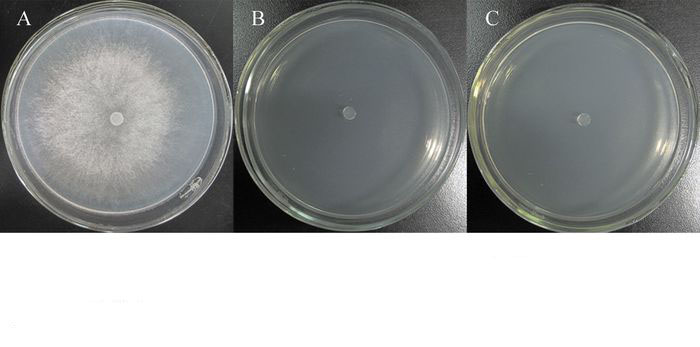
图 4 菌株TJB-8蛋白类和脂肽类提取物的抑菌活性
Figure 4. Antifungal activities of crude proteins and lipopeptides produced by strain TJB-8
表 4 菌株TJB-8不同抑菌物质的抑菌活性
Table 4. Antifungal activities of different antifungal substances produced by strain TJB-8 against Cytospora chrysosperma
t/h 抑制率/% 蛋白类提取物 脂肽类提取物 挥发性气体 12 100 ± 0 a 100 ± 0 a 100 ± 0 a 24 100 ± 0 a 100 ± 0 a 78.26 ± 1.88 b 36 100 ± 0 a 100 ± 0 a 77.02 ± 1.08 b 48 100 ± 0 a 100 ± 0 a 76.08 ± 0.83 b 60 100 ± 0 a 100 ± 0 a 72 100 ± 0 a 100 ± 0 a -
TJB-8挥发性气体的抑菌活性检测发现,TJB-8的挥发性气体对杨树腐烂病菌具有很好的抑菌活性,能有效地抑制杨树腐烂病菌菌丝的生长(图 5)。挥发性气体的抑菌活性随着培养时间的延长而逐渐降低,但依然保持较高的抑菌率,培养48 h后其抑制率仍然达到76.08%(表 4)。
-
蜡样芽孢杆菌广泛存在于自然界土壤中,和其他种类的生防芽孢杆菌一样都具有抑菌活性强、抑菌谱广的优点。蜡样芽孢杆菌能抑制包括镰刀菌属Fusarium,葡萄孢属Botrytis,腐霉属Pythium,梨孢属Piricularia,丝核菌属Rhizoctonia,假单胞菌属Pseudomonas等植物病原菌[16-19]。本研究发现菌株TJB-8具有较强的拮抗活性和较广的抑菌谱,其无菌滤液在PDA平板上能有效地抑制杨树腐烂病菌的生长,抑制率达到97.42%(72 h),且能使生长的杨树腐烂病病菌菌丝产生畸形膨大;同时TJB-8的无菌滤液还能有效抑制其他多种植物病原真菌菌丝生长,包括胶孢炭疽菌、细极链格孢菌、尖孢镰刀菌、禾谷镰刀菌和立枯丝核。通过结合菌株的形态学特征、生理生化特征和16S rDNA序列分析最终将TJB-8鉴定为蜡样芽孢杆菌。
通过产生抑菌活性物质来抑制或杀死病原菌是蜡样芽孢杆菌和其他种类芽孢杆菌表现出较强抑菌活性及较广抑菌谱的重要原因之一[3]。通过核糖体途径和非核糖体途径合成的蛋白类和脂肽类抑菌物质是蜡样芽孢杆菌产生的主要抑菌活性物质[3-4]。蛋白类物质主要有蛋白酶类物质和其他蛋白类物质。蛋白酶类物质常见的主要有几丁质酶、纤维素酶、蛋白酶、脂肪酶和葡聚糖酶等。这些真菌细胞壁裂解酶的作用机制主要是通过裂解病原菌细胞壁,导致病原菌细胞破裂死亡,从而抑制或杀死病原菌[20]。大部分的生防芽孢杆菌都能产生1种或多种细胞壁裂解酶。CHANG等[16]发现生防蜡样芽孢杆菌Bacillus cereus QQ308能产生多种抗真菌裂解酶,包括几丁质酶和蛋白酶。HUANG等[21]报道蜡样芽孢杆菌28-9能产生一种有效抑制百合灰霉病菌Botrytis elliptica孢子萌发的几丁质酶。本研究发现蜡样芽胞杆菌TJB-8能产生β-1, 3-葡聚糖酶和蛋白酶,这可能是TJB-8无菌滤液能使杨树腐烂病菌的菌丝产生畸形的重要原因之一。蜡样芽孢杆菌还能通过核糖体途径产生其他类型的蛋白类抑菌物质。郝变青等[22]研究发现蜡样芽孢杆菌BC98-1不仅能产生几丁质酶,还能产生能有效抑制黄瓜枯萎病菌尖孢镰刀菌的菌丝生长和孢子萌发的抑菌蛋白。本研究从TJB-8无菌滤液中提取蛋白类物质并测定其抑菌活性发现,其蛋白类提取物具有很强的抑菌活性,能100%抑制杨树腐烂病菌的生长。除了蛋白类抑菌物质,蜡样芽孢杆菌通过非核糖体途径还能产生多种类型的多肽类抑菌物质。SRIRAM等[23]报道蜡样芽孢杆菌NK1能产生具有抑菌活性的脂肽类物质。SILO-SUH等[24]首次从蜡样芽孢杆菌UW85中分离到了线形多肽类抑菌物质zwittermicin A,能有效抑制苜蓿疫霉根腐病菌Phytophthora medicagini的菌丝生长和孢子萌发。本研究发现TJB-8的脂肽类提取物也具有抑菌活性,有效抑制了杨树腐烂病菌的生长,抑制率达到100%。
挥发性气体也是芽孢杆菌产生的重要抑菌活性物质之一,这些具有抑菌活性的挥发性气体主要包括醇类、醛类、酸类、脂类和酮类等化合物[5, 25]。很多蜡样芽孢杆菌也被报道能产生挥发性抑菌气体。HUANG等[26]研究发现蜡样芽孢杆菌C1L产生的挥发性气体能有效抑制灰霉病菌Botrytis cinerea侵染烟草Nicotiana tabacum叶片,最后鉴定发现其挥发性气体中主要的抑菌物质是二甲基二硫(DMDS)。KAI等[27]报道蜡样芽孢杆菌的挥发性气体能抑制病原真菌菌丝生长和孢子萌发,并影响菌丝的形态。本研究的结果表明:菌株TJB-8的挥发性气体能很好的抑制杨树腐烂病菌的生长,抑制率达到76.08%。
蜡样芽孢杆菌TJB-8抑菌活性强、抑菌谱广且能产生多种类型的抑菌活性物质,显示出了较高的研究和应用价值。目前,对于蜡样芽孢杆菌TJB-8的不同类型的抑菌活性物质的具体种类及结构还不清楚,需要后期进一步的纯化与鉴定,在田间的实际应用效果也需要开展后续的验证。
Antagonistic strain of TJB-8 and its antifungal substances
-
摘要: 菌株TJB-8是从杨树Populus根部土壤中分离获得的一株对杨树腐烂病菌Cytospora chysosperma具有明显抑菌效果的细菌。基于形态学特征、生理生化特性和16S rDNA序列分析鉴定了TJB-8的分类地位,并分别采用菌丝生长速率法和二分皿法分析了其抑菌活性物质,为菌株TJB-8的实际开发利用提供理论基础。研究结果显示:菌株TJB-8的无菌滤液有效抑制了杨树腐烂病菌菌丝生长,抑制率达到97.42%(72 h),并使生长的菌丝产生畸形膨大;TJB-8的无菌滤液还能明显抑制胶孢炭疽菌Colletotrichum gloeosporioides,细极链格孢菌Alternaria tenuissima,尖孢镰刀菌Fusarium oxysporum,禾谷镰刀菌F.graminearum和立枯丝核菌Rhizoctonia solani的生长;菌株TJB-8经鉴定为蜡样芽孢杆菌Bacillus cereus,并发现其能产生β-1,3-葡聚糖酶和蛋白酶;此外,其产生的蛋白类物质、脂肽类物质及挥发性气体均表现出较强的抑菌活性,对杨树腐烂病菌的抑制率分别达到100%(72 h),100%(72 h)和76.08%(48 h)。蜡样芽孢杆菌TJB-8是一株抑菌活性强、抑菌谱广且能产生多种抑菌活性物质的拮抗细菌,作为一种生物杀菌剂具有较高的工业开发和田间应用的前景。Abstract: Strain TJB-8 has been isolated from the root soil of poplar and has exhibited a strong inhibitory effect against Cytospora chrysosperma, a predominant fungus causing poplar canker. In order to provide technical guidance for further exploitation and utilization of TJB-8, the species of TJB-8 and its antifungal substances were investigated in this study. The strain TJB-8 was identified based on morphological and physiological characteristics, as well as a phylogenetic analysis of partial 16S rDNA sequence; the antifungal substances of TJB-8 were analyzed by colony diameter assay and two-compartment plate method. Results revealed that sterile culture filtrates of TJB-8 had a strong antifungal activity against C. chrysosperma with an inhibitory rate of 97.42% (over 72 h). The hyphae of C. chrysosperma at the edge of the colony exhibited swelling after being treated with a sterile culture filtrate. Also, this sterile culture filtrate effectively inhibited the hyphae growth of Colletotrichum gloeosporioides, Alternaria tenuissima, Fusarium oxysporum, Fusarium graminearum, and Rhizoctonia solani. Strain TJB-8 was identified as Bacillus cereus and produced β-1, 3-glucanase and protease. Moreover, TJB-8 produced high antifungal activities against C. chrysosperma with crude proteins (100% in 72 h), lipopeptides (100% in 72 h), and volatiles (76.08% in 48 h). Thus, B. cereus TJB-8 was an antagonistic bacterium with strong antifungal activity, a wide inhibitory spectrum, and varied antifungal substances, having a broad prospect of industrial development and field application as a biological fungicide.
-
Key words:
- forest protection /
- Bacillus cereus /
- antifungal activity /
- antifungal proteins /
- lipopeptides /
- volatiles
-
同一块土地连续种植同一作物或近缘作物,即使在正常的栽培管理状况下,也会出现植株长势变弱、病虫害严重、作物产量降低、品质下降等的现象为连作障碍[1],很多作物都存在这一现象[2−5]。目前,中国连作危害程度高的地块面积超过10%,当季作物损失占20%~80%,严重的甚至几乎绝产。连作障碍每年造成数百亿元的经济损失,同时还降低了农作物的安全性[6]。作物轮作、间作、套作等增加生物多样性的方法是解决连作障碍的有效措施,但都仅是短期内的改善,且操作上存在诸多不便,推广应用不理想。中国土地利用指数高、经营强度大,同一地区集中连作1~2种植物是当下农业生产的主要模式[7]。因此,目前提出的解决连作障碍的技术与方法,难以从本质上解决连作障碍问题[8]。以“作物连作障碍”为关键词,统计1989—2018年的结果表明:突现度(某变量出现频次在较短时间内突然增加)排名前二位的分别是黄豆Glycine max (35.3094)、马铃薯Solanum tuberosum(28.9866)[9],说明这2种植物连作障碍问题严重。而禾本科植物连作障碍的研究报道极少,说明实际生产中禾本科Poaceae植物很少出现连作障碍。禾本科作物还常常作为连作障碍首选的间作或轮作对象,如对枸杞Lycium chinense与禾草间作研究发现:土壤理化性质、土壤酶活性、枸杞生长速率和产量以及禾草生物量等指标均表现为间作高于枸杞单独连作,间作对枸杞分枝的促进作用尤为显著[10]。胡麻Linum usitatissimum与小麦Triticum aestivum轮作可减弱土壤水提液对胡麻种子萌发以及生长的自毒作用,利于胡麻的生长[11]。可见,不同植物耐受连作障碍的能力不同。
土壤酶是大部分物质转化过程的执行者[12],土壤酶活性是衡量土壤肥力的重要指标之一[13]。在植物生长过程中,根系不断分泌代谢产物到根际土壤,对土壤微生物活动产生显著影响,从而影响土壤酶活性,由此改变了根际环境土壤的理化性质,特别是各种养分的生物有效性以及养分的转化速率[14]。随着连作时间的延长,植株细胞膜的通透性增加,养分物质运输功能下降,引发自毒作用,作物的正常生长也受到影响[15],虽然对连作障碍这一农业生产老大难问题已经开展了大量研究[9],但同时比较多科植物连作过程中生物化学变化的研究未见报道。为此,本研究通过比较多科植物连作过程中土壤酶活性的差异变化,假设植物遗传特性是耐连作障碍的重要因子,为耐连作障碍的发生机制研究提供证据。
1. 材料与方法
1.1 材料
以浙江农林大学实习基地的森林土壤和育苗基质1∶1的体积比混合均匀后为盆栽本底土,该土结构疏松、质地优良,具有良好的保水保肥效果。森林土壤基本理化性质:pH 5.21,速效钾为193.33 mg·kg−1,碱解氮为51.17 mg·kg−1,有效磷为6.00 mg·kg−1,全氮为1.33 g·kg−1,全碳为28.50 g·kg−1。育苗基质基本理化性质:有机质质量分数大于45%,pH 5.50~7.00,含少量的氮磷钾物质。混合后的土pH 5.42。植物包括:豆科Fabaceae花生Arachis hypogaea、黄豆Glycine max,葫芦科Cucurbitaceae西瓜Citrullus lanatus、南瓜Cucurbita moschata,茄科Solanaceae番茄Solanum lycopersicum、马铃薯Solanum tuberosum,禾本科Poaceae早熟禾亚科Pooideae二穗短柄草Brachypodium distachyon (Bd-21,模式植物)、黑麦草Lolium perenne、小麦Triticum aestivum,黍亚科Pamicinae玉米Zea mays、高粱Sorghum bicolor。选择饱满,大小均匀的种子,所有种子在播种前均经过氧化氢灭菌消毒和催芽。
1.2 试验设计
进行单一作物长期连作的盆栽试验,每种植物至少6盆(即重复),连续种植3季。考虑不同植物的生物量尽量一致的原则,花生、黄豆、西瓜、南瓜、番茄、马铃薯、二穗短柄草、黑麦草、小麦、玉米、高梁分别栽培5、5、5、5、7、2、10、40、10、5、5 株·盆−1,所选植物生长均匀,长势一致。
1.3 盆栽试验
于浙江农林大学人工气候箱进行试验,气候箱栽培条件为25 ℃、光照16 h,18 ℃、黑暗 8 h的昼夜循环,生长旺季时温度调至30 ℃。土壤水分基本保持在75%的田间持水量,其他栽培管理措施按一般要求进行,各盆保持一致。注意抗旱、防病虫,保证全苗及植株正常生长发育。
种植时间和采样时间如表1所示,每茬植物的收获时间处于该植物营养生长时期,根据植物生长的情况可适当调整采样时间,栽培时长为38~55 d,共采集3茬,鉴于本底土壤速效钾质量分数高、而氮磷质量分数低的实际情况,在第1季时选择磷酸二铵[(NH4)2HPO4]作为追肥[氮磷钾质量比(N∶P2O5∶K2O)为18∶46∶0]。肥料按照肥质量比1∶50进行配置,每盆每次浇50 mL,均以每季植物能正常生长为依据适当补施肥料,每季浇施3次。选择生长一致的4个重复,分别采集第1季和第3季的土壤样品,分析土壤酶以及土壤性质。收获时植物根系基本充满整个盆,密布于土壤之间,植物根系对土壤的影响涉及大部分土壤,可以认为盆中土壤均为根区土壤。将植物取出后的盆中土壤充分混匀后得到混合样品,风干待测。
表 1 植物栽培和收获时间表Table 1 Schedule for transplanting and harvesting栽植季度 栽培日期
(年-月-日)采样日期
(年-月-日)采收植物 第1季 2020-12-02 2021-02-02
2021-02-07
2021-02-20
2021-03-01
2021-03-08黄豆、花生
高粱、玉米
马铃薯、小麦
二穗短柄草、黑麦草
番茄、西瓜、南瓜第2季 2021-03-18 2021-04-29
2021-05-02
2021-05-07
2021-05-14
2021-05-17黄豆、玉米
花生、高粱
西瓜、南瓜、番茄
马铃薯、二穗短柄草
黑麦草、小麦第3季 2021-05-31 2021-07-14
2021-07-20
2021-07-21
2021-07-23玉米、番茄
黄豆、花生、马铃薯
西瓜、南瓜、高粱
黑麦、小麦、二穗短柄草1.4 土壤酶活性的测定
测定土壤碳、氮、磷循环的3类土壤酶:①碳循环土壤酶,包括α-葡萄糖苷酶(AG)、β-葡萄糖苷酶(BG)、纤维二糖水解酶(CB)、β-木糖苷酶(XYL);②氮循环土壤酶,包括亮氨酸氨基肽酶(LAP)、N-乙酰-β-氨基葡萄糖苷酶(NAG);③ 磷循环土壤酶,为酸性磷酸酶(PHOS)。酶活性测定采用SAIYA-CORK等[16]的荧光微孔板检测技术,具体测定方法:称取2 g土壤,加入醋酸缓冲液进行浸提,取200 μL浸提液与96孔板后立即加入反应底物,25 ℃ 培养箱中黑暗培养3 h,使用多功能酶标仪(SynergyTM H1,Biotek)在365和450 nm波长下测定吸光度并计算土壤酶活性。
2. 结果与分析
2.1 不同植物土壤pH及有效氮、磷差异
重点分析与土壤碳、氮、磷循环相关酶活关联最大的pH、碱解氮和有效磷等3个指标(表2)。与本底土壤pH 5.42相比,除玉米土壤外,其他植物种植1季后,土壤pH普遍下降,其中豆科植物下降幅度最小,而西瓜最大;第3季又比第1季下降,所有土壤pH均在4.5以下,土壤呈强酸性。连作后土壤碱解氮及有效磷明显增加,第1季土壤碱解氮质量分数西瓜最低、玉米最高,有效磷质量分数则是南瓜最高、小麦最低。第3季时土壤有效磷质量分数比第1季大幅增加,而碱解氮则有增有减。
表 2 第1季和第3季植物收获后不同植物根区土壤化学性质比较Table 2 Comparison of soil chemical properties in root zone of different plants after harvest in the first and third seasons植物种类 pH 碱解氮/(mg·kg−1) 有效磷/(mg·kg−1) 第1季 第3季 第1季 第3季 第1季 第3季 花生 5.03±0.05 bc 4.20±0.08 abc 561.65±60.70 cde 705.83±58.59 a 149.89±17.64 e 651.52±21.10 a 黄豆 5.23±0.17 ab 4.10±0.08 abc 567.42±34.93 bcd 577.84±30.07 ab 161.44±30.06 de 355.58±63.73 ef 西瓜 4.23±0.25 e 3.97±0.05 bc 492.05±46.00 e 672.01±96.79 ab 161.36±30.12 de 393.66±34.33 def 南瓜 4.90±0.22 cd 4.13±0.21 abc 664.13±22.70 ab 553.72±108.19 ab 323.48±17.76 a 577.35±93.74 ab 番茄 4.93±0.09 bc 4.13±0.12 abc 647.74±56.66 abc 520.56±131.32 abc 292.47±18.44 ab 478.03±0.02 bcde 马铃薯 4.77±0.05 cd 3.97±0.05 bc 530.86±10.41 de 360.96±12.77 c 267.34±49.73 abc 304.40±51.93 f 二穗短柄草 4.57±0.17 d 3.93±0.12 c 540.13±39.37 de 356.81±20.47 c 245.17±16.65 bc 425.49±40.00 cdef 黑麦 4.73±0.12 cd 4.23±0.12 ab 593.97±29.02 bcd 667.47±82.33 ab 218.97±46.98 cd 546.70±60.91 abc 小麦 4.83±0.05 cd 4.23±0.12 ab 567.93±26.81 bcd 687.14±71.14 ab 114.48±11.85 e 524.25±41.53 abc 玉米 5.43±0.17 a 4.27±0.21 a 699.27±75.11 a 546.80±114.25 ab 288.63±45.34 ab 599.87±42.06 ab 高粱 4.77±0.09 cd 4.13±0.05 abc 397.89±24.82 f 509.08±23.38 bc 124.26±3.98 e 485.14±24.71 bcd 说明:不同小写字母表示不同植物间差异显著(P<0.05)。 2.2 不同植物土壤根际酶活性差异
2.2.1 第1季不同植物土壤碳、氮、磷循环相关酶活性差异
第1季土壤碳循环相关的AG和BG活性水平相近(图1 A和B), AG活性较高的有南瓜、番茄、黑麦草和玉米,而小麦和高粱最低;BG活性较低为黄豆、马铃薯和玉米,较高组为花生、南瓜、黑麦草和高粱,同科植物均存在较大差异,甚至达显著水平(P<0.05)。CB活性总体低于AG和BG,不同植物之间的高低水平与AG基本一致; XYL活性最高的是马铃薯,最低是黑麦草(图1C和D)。综上所知,种植1季后,不同植物之间4种土壤碳循环酶活性高低顺序没有显著分异,相对而言,几种禾本植物的波动较大,特别是玉米在所有植物中的排序处于最高(AG和CB)或最低(BG)的位置。与土壤氮循环相关的LAP和NAG活性其重复之间的变异比碳循环酶活性小,但南瓜土壤LAP活性异常高,其他植物之间没有显著差异(图1E);NAG活性最高的是高粱,最低是马铃薯和二穗短柄草(图1F)。PHOS活性在不同植物之间的差异是所有酶中最小的,总体而言,禾本科植物高于非禾本科植物,其中最高的还是高粱(图1G)。
分析第1季所有植物土壤酶活性之间的相关性结果发现:显著相关性只存在于AG与PHOS(R=−0.647)、BG与XYL (R=−0.605)及LAP (R=0.653)、CB与XYL (R=−0.704),说明不同植物对土壤酶活性影响强度、甚至方向不相同,显著负相关(3组)多于显著正相关(1组)。
2.2.2 第3季不同植物土壤碳、氮、磷循环相关酶活性差异
第3季植物土壤酶活性,除XYL外,土壤酶活性的重复之间变异也显著缩小(图2),其主要规律为非禾本科植物AG高于禾本科植物、而CB则相反;不同植物之间土壤BG活性差异不显著;禾本科植物XYL活性总体高于非禾本科植物。综上所知,种植3季植物后,二穗短柄草土壤几种碳循环相关酶活性总体较高,而玉米则总体较低。不同植物土壤2种氮循环酶活性没有一致的差异规律。土壤磷循环相关的PHOS活性则是同科的不同种出现一高一低相反的结果,二穗短柄草、黑麦草和小麦之间差异较小。
分析第3季所有植物7种土壤酶活性之间的相关性结果发现:只有AG与BG (R=0.763)、LAP与PHOS (R=0.642)之间显著相关,说明植物对不同土壤酶活性影响分异性增加。
分析土壤酶的动态变化(图3)发现:与第1季相比,第3季植物收获后土壤酶活性多数呈增加趋势,其中CB活性的增幅最明显,而玉米则除BG外其余土壤酶活性均出现降幅。
2.3 不同科及禾本科亚科植物根区土壤酶活性差异
将非禾本科植物以科为单位、禾本科以亚科为单位进行比较。禾本科包括二穗短柄草、黑麦和小麦等组成的早熟禾亚科(C3植物)以及由玉米和高粱组成的黍亚科(C4植物)。由图4发现:第1季不同科或亚科之间AG活性无显著差异,而第3季的茄科显著高于豆科和黍亚科(P<0.05)。BG活性第3季各科、亚科之间无显著差异,第1季的葫芦科显著高于豆科和茄科(P<0.05),茄科的平均值最低。 第1季土壤的CB活性表现为黍亚科显著高于茄科(P<0.05),而第3季则是黍亚科显著低于早熟禾亚科及豆科(P<0.05),豆科显著高于葫芦科(P<0.05)。XYL活性第1季无差异,而第3季早熟禾亚科显著高于其他科(P<0.05)。土壤氮循环酶LAP活性第1季的葫芦科显著高于其他科(P<0.05),而第3季却没有显著差异;NAG活性第1季无差异,第3季黍亚科显著低于豆科、葫芦科和早熟禾亚科(P<0.05)。PHOS活性第1季时黍亚科显著高于其他科(P<0.05),第3季则是豆科显著低于其他科(P<0.05)。
以科或亚科为单位统计分析的动态变化结果(图5)表明:多科植物不同酶活性大多增加;豆科、茄科和早熟禾亚科增幅最大的是CB,葫芦科增幅最大的是PHOS,黍亚科增幅最大的是LAP。
3. 讨论
3.1 不同植物之间土壤根区酶活性差异分析
种植1季植物后不同植物土壤的多项性质产生差异变化,pH 5.00以上的花生、黄豆和玉米,其中玉米pH最高,而西瓜和二穗短柄草pH较低,分别为4.23和4.57。土壤碱解氮的差异规律与pH基本一致,说明植物对氮利用越多,则土壤pH下降越大(西瓜和高粱),这一结果符合氮肥引起土壤酸化的结论[17]。第1季后玉米土壤各项养分指标及pH均处于较高水平,可能是其吸收利用养分相对较少的结果,与高粱、小麦土壤差异明显。另外,除BG外,玉米土壤的其他3种碳循环酶活性均较高,而小麦则较低。玉米土壤酶活性与土壤养分呈正相关,与已有研究结果[18]一致。玉米和小麦土壤AG活性与BG活性相反,说明高水平土壤养分不利于BG活性发挥。BG水解结合于末端非还原性的β-D-葡萄糖键,与纤维素降解有关,由于纤维素的贫营养特征,因此,分解纤维素的微生物能够长期适应低养分水平土壤环境[19]。番茄和马铃薯土壤也是AG活性高,BG活性低,土壤氮磷水平总体与玉米相近。除了土壤养分外,植物也能通过根系分泌物影响土壤微生物,从而间接影响土壤酶活性。土壤LAP活性除南瓜异常高外,其他植物之间差异不大。南瓜土壤LAP活性异常高的原因可能与其根系分泌物存在诱导LAP活性提高的成分。南瓜被广泛用作砧木以缓解西瓜、黄瓜、甜瓜、冬瓜和苦瓜等多种植物连作障碍[20−24],这与南瓜土壤较高的LAP活性有关。高粱土壤的NAG活性最高,BG活性也最高,NAG与几丁质降解有关,几丁质是真菌细胞壁的主要成分。高粱土壤可能存在较丰富的纤维素[25],促进降解纤维素的真菌大量繁殖,从而积累含几丁质的大量真菌生物残体,诱导NAG活性增加。高粱土壤PHOS活性显著高于其他植物,已有研究表明:土壤有效磷较低可诱导PHOS活性[26−28],由此推测,高粱土壤PHOS活性显著高是因为其土壤有效磷低于其他植物。本研究土壤PHOS活性总体均低于其他研究报道[29−30]。
种植3季作物后,土壤pH较第1季下降0.50~1.16,玉米仍然是所有植物中最高(4.27),而西瓜、马铃薯和二穗短柄草则低于4.0;土壤碱解氮、有效磷显著增加,特别是有效磷增加了2~3倍,原因是本底土壤有效磷很低(6.00 mg·kg−1),氮素水平也偏低(碱解氮51.17 mg·kg−1),而速效钾丰富(193.33 mg·kg−1),因此种植过程中追施高磷的磷酸二铵肥料以保证植物养分需求。第3季时土壤养分水平过高对土壤酶活性产生一定的负面影响,而二穗短柄草虽然其土壤pH仅3.93,但土壤氮磷水平较低,反而其各种土壤酶活性均较高;马铃薯土壤pH、养分水平与二穗短柄草相近,除XYL和NAG酶外,其他5种酶活性也较高。相反的情况发生在玉米,土壤养分水平较高但土壤各种酶活性相对较低,说明高水平养分对玉米土壤酶活性的负面影响比其他植物强。从第3季土壤酶的增减幅度结果证明:玉米土壤仅BG活性有小幅增加,其他6种酶均下降;而CB活性总体增幅最大,其中小麦和马铃薯分别增加519%和267%。CB水解纤维素释放纤维二糖,其增幅最大的原因可能:一是连作后真菌数量增加[31−32],真菌是分解纤维素的最主要类群; 二是随着种植次数增加,土壤中纤维素不断积累,诱导微生物分泌CB。这与王雨晴等[33]的研究一致,即CB活性与纤维素含量及真菌基因丰度呈极显著正相关。
3.2 不同科及禾本科亚科植物根区土壤酶活性的差异分析
禾本科植物存在着广泛的基因序列和功能的保守性[34],其他同科植物也有共性的遗传基因。一般而言,遗传相近的植物具有相似的根系分泌物、对养分的需求也较相似,由此推测,同一科植物对土壤微生物以及土壤酶活性可能有共性影响。第1季植物收获后,只有BG (葫芦科显著高于豆科和茄科)和CB (黍亚科显著高于茄科) 2种酶存在科之间的显著差异,而第3季收获后仅BG和LAP不存在显著差异,说明随着种植季数的增加,同科植物对土壤的共性影响逐渐显现。BG和CB都是降解纤维素的酶,最初的本底土壤微生物较少,而种植1季后土壤微生物大量繁殖,由于不同植物根系分泌物以及根系残体化学组成的差异,特别是根系残体中纤维素较多,由此引起不同科植物纤维素降解相关酶的差异。第3季时不同科植物土壤酶活性之间的差异加大,虽同为早熟禾亚科植物,但二穗短柄草在遗传上与小麦及黑麦草距离相对较远,因此第3季时其土壤AG和BG活性明显高于小麦及黑麦草。 第3季时非禾本科植物土壤AG活性明显高于禾本科植物,最高是茄科,而XYL则正好相反,其中最高的是早熟禾亚科。AG和XYL都是大分子有机物水解的末端酶,非禾本科植物土壤AG活性高,说明土壤中其上游大分子有机物中α-葡萄糖苷链接的多糖(如淀粉)较多,而禾本科植物土壤XYL活性高,说明土壤中上游大分子有机物中β-木糖苷酶链接的半纤维素多糖较多。也可能是禾本科植物的根系分泌物与非禾本科植物存在差异[35]。禾本科植物中早熟禾亚科土壤CB活性较高,但黍亚科则明显低于非禾本科植物,可能C3和C4植物的碳代谢物存在差异,需要后继分析根系分泌物。不同科植物第3季土壤CB和XYL活性的高低与第1季正好相反,豆科和茄科土壤CB活性明显升高,而黍亚科下降,茄科土壤XYL活性明显下降,而早熟禾亚科升高,说明CB和XYL可能存在互补关系。另外,禾本科植物土壤的XYL活性显著高于非禾本科植物,可能是禾本科植物土壤中半纤维素含量较丰富。XYL水解半纤维素产生种类丰富的五碳糖和六碳糖,是否有利于土壤微生物活动值得深入研究。黍亚科土壤PHOS活性在第1季和第3季土壤中均为最高,而其土壤NAG活性在第3季为最低。分科统计则土壤酶活性总体以上升为主,其中CB活性增幅最大,而豆科和茄科的XYL活性、葫芦科的LAP活性出现下降,黍亚科植物土壤的NAG活性和PHOS活性都出现下降,说明黍亚科植物土壤的氮、磷循环能力下降,可能是氮、磷养分增加显著,加上黍亚科植物对氮、磷的需求不高,因此,相关循环酶活性下降。
4. 结论
通过不同科11种植物第1季和第3季土壤碳、氮、磷循环相关酶活性分析发现:同科的2种植物不同土壤酶、同种土壤酶不同科植物的动态变化规律并不一致,第1季和第3季黍亚科植物土壤PHOS活性均为最高,其中,高粱又显著高于比玉米;第3季时禾本科植物土壤的XYL活性显著高于非禾本科植物,而3种早熟禾亚科植物土壤又显著高于黍亚科植物。禾本科植物土壤PHOS和XYL活性较高是否与其耐连作有关,需要深入研究连作次数和土壤微生物指标等。
-
表 1 拮抗菌株TJB-8无菌滤液对杨树腐烂病菌的抑菌活性
Table 1. ntifungal activity of sterile culture filtrate of strain TJB-8 against Cytospora chrysosperma
培养时间/h 菌落扩展直径/mm 抑制率/% 处理组 对照组 12 0 ± 0 14.83 ± 0.29 100 ± 0 a 24 1.00 ± 0 33.67 ± 0.58 97.03 ± 0 b 36 1.60 ± 0.36 53.33 ± 1.15 97.00 ± 0.68 b 48 2.17 ± 0.76 72.17 ± 0.76 97.00 ± 1.06 b 60 2.17 ± 0.76 84.00 ± 0 97.42 ± 0.91 b 72 2.17 ± 0.76 84.00 ± 0 97.42 ± 0.91 b 说明:表中数据为平均数±标准差。同列数据后无相同小写字母的表示差异显著(P<0.05)。 表 2 拮抗菌株TJB-8无菌滤液的抑菌谱
Table 2. Antifungal spectrum of sterile culture filtrate of strain TJB-8
病原真菌 抑制率/% 杨树腐烂病菌Cytospora chrysosperma 97.42 ± 0.91 a 胶抱炭痕菌Colletotrichum gloeosporioides 58.40 ± 1.26 c 细极链格抱菌Alternaria tenuissima 96.65 ± 0.83 a 尖抱镰刀菌Fusarium oxysporum 57.73 ± 236 c 禾谷镰刀菌Fusarium graminearum 64.11 ± 2.87 b 立枯丝核菌Rhizoctonia solani 95.45 ± 1.10 a 表 3 菌株TJB-8生理生化特性
Table 3. Physiological and biochemical characteristics of strain TJB-8
测定指标 菌株特性 蜡样芽孢杆菌 TJB-8 接触酶 + + 厌氧生长 + + V-P测定 + + 氧化酶 + + 柠檬酸盐利用 + + 卵磷脂酶水解 + + 硝酸盐还原 + + 明胶液化 + + 吲哚产生 + - 苯丙氨酸脱氨酶 - - 淀粉水解 + + 葡萄糖产酸 + + D-木糖产酸 - - L-阿拉伯糖产酸 - - 甘露醇产酸 - - 生长pH 5.7 + + 说明: +表示阳性或生长; -表示阴性或不生长。蜡样芽孢杆菌生理生化特性参见参考文献[9]。 表 4 菌株TJB-8不同抑菌物质的抑菌活性
Table 4. Antifungal activities of different antifungal substances produced by strain TJB-8 against Cytospora chrysosperma
t/h 抑制率/% 蛋白类提取物 脂肽类提取物 挥发性气体 12 100 ± 0 a 100 ± 0 a 100 ± 0 a 24 100 ± 0 a 100 ± 0 a 78.26 ± 1.88 b 36 100 ± 0 a 100 ± 0 a 77.02 ± 1.08 b 48 100 ± 0 a 100 ± 0 a 76.08 ± 0.83 b 60 100 ± 0 a 100 ± 0 a 72 100 ± 0 a 100 ± 0 a -
[1] 齐爱勇, 赵绪生, 刘大群.芽孢杆菌生物防治植物病害研究现状[J].中国农学通报, 2011, 27(12):277-280. QI Aiyong, ZHAO Xusheng, LIU Daqun. Research of biological control in plant diseases by Bacillus spp.[J]. Chin Agric Sci Bull, 2011, 27(12):277-280. [2] 黄海婵, 裘娟萍.枯草芽孢杆菌防治植物病害的研究进展[J].浙江农业科学, 2005(3):213-215. HUANG Haichan, QIU Juanping. Research progress of control in plant diseases by Bacillus subtilis[J]. J Zhejiang Agr Sci, 2005(3):213-215. [3] REN Jianjun, SHI Guanglu, WANG Xiaoqin, et al. Identification and characterization of a novel Bacillus subtilis strain with potent antifungal activity of a flagellin-like protein[J]. World J Microbiol Biotechnol, 2013, 29:2343-2352. [4] CAWOY H, DEBOIS D, FRANZIL L, et al. Lipopeptides as main ingredients for inhibition of fungal phytopathogens by Bacillus subtilis/amyloliquefaciens[J]. Microb biotechnol, 2015, 8(2):281-295. [5] CHAVES-LOPEZ C, SERIO A, GIANOTTI A, et al. Diversity of food-borne Bacillus volatile compounds and influence on fungal growth[J]. J Appl Microbiol, 2015, 119(2):487-499. [6] HUANG Huayi, YU Dimei, TIAN Chengming, et al. Optimization of medium to improve the antifungal activity of Bacillus atrophaeus XW2 using response surface methodology[J]. J Pure Appl Microbiol, 2015, 9(3):1783-1792. [7] HUANG Huayi, WU Ziqiang, TIAN Chengming, et al. Identification and characterization of the endophytic bacterium Bacillus atrophaeus XW2, antagonistic towards Colletotrichum gloeosporioides[J]. Ann Microbiol, 2014, 65(3):1361-1371. [8] 孙妍, 于地美, 黄华毅, 等.黄栌枯萎病菌抑菌细菌的分离与鉴定[J].南京林业大学学报(自然科学版), 2015, 39(6):17-23. SUN Yan, YU Dimei, HUANG Huayi, et al. Isolation and identification of antagonistic bacterium against smoke tree wilt fungus Verticillium dahliae[J]. J Nanjing For Univ Nat Sci Ed, 2015, 39(6):17-23. [9] 东秀株, 蔡妙英.常见细菌系统鉴定手册[M].北京:科学出版社, 2001. [10] 周德庆.微生物学实验手册[M].上海:上海科学技术出版社, 1986. [11] 何红, 邱思鑫, 蔡学清, 等.辣椒内生细菌BS-1和BS-2在植物体内的定殖及鉴定[J].微生物学报, 2004, 44(1):13-18. HE Hong, QIU Sixin, CAI Xueqing, et al. Colonization in plants and identification of endophytic bacteria BS-1 and BS-2 from Capsicum annuum[J]. Acta Microbiol Sin, 2004, 44(1):13-18. [12] MARCHESI J R, SATO T, WEIGHTMAN A J, et al. Design and evaluation of useful bacterium-specific PCR primers that amplify genes coding for bacterial 16S rRNA[J]. Appl Environ Microbiol, 1998, 64(2):795-799. [13] 高小宁, 涂璇, 黄丽丽, 等.产β-1, 3-葡聚糖酶植物内生放线菌的筛选及抑菌活性研究[J].微生物学通报, 2009, 36(8):1189-1194. GAO Xiaoning, TU Xuan, HUANG Lili, et al. The screen of plant endophytic actinomycetes producing β-1, 3-glucanase and antifungal activity of β-1, 3-glucanase[J]. Microbiology, 2009, 36(8):1189-1194. [14] ESSGHAIER B, FARDEAU M L, CAVOL J L, et al. Biological control of grey mould in strawberry fruits by halophilic bacteria[J]. J Appl Microbiol, 2009, 106(3):833-846. [15] REN Jiahong, LI Hao, WANG Yanfang, et al. Biocontrol potential of an endophytic Bacillus pumilus JK-SX001 against poplar canker[J]. Biol Control, 2013, 67(3):421-430. [16] CHANG W T, CHEN Y C, JAO C L. Antifungal activity and enhancement of plant growth by Bacillus cereus grown on shellfish chitin wastes[J]. Bioresour Technol, 2007, 98(6), 1224-1230. [17] 唐容容, 杨文革, 胡永红, 等.蜡样芽孢杆菌CGMCC4348菌株防治番茄灰霉病的效果及机理研究[J].湖北农业科学, 2013, 52(8):1817-1820. TANG Rongrong, YANG Wenge, HU Yonghong, et al. Control effect and mechanism of strain Bacillus cereus CGMCC4348 to Botrytis cinerea[J]. J Hubei Agric Sci, 2013, 52(8):1817-1820. [18] 张美英, 王林, 张德纯, 等.一株蜡样芽孢杆菌16S rDNA分子鉴定及其发酵液抑菌谱的测定[J].内蒙古农业大学学报(自然科学版), 2014, 35(6):1-5. ZHANG Meiying, WANG Lin, ZHANG Dechun, et al. Identification of a Bacillus cereus via 16S rDNA molecular and determination of antibacterial spectrum from ITS fermentation broth[J]. J Inner Mongolia Agric Univ Nat Sci Ed, 2014, 35(6):1-5. [19] 郑广荣, 梁樱凡, 杜倩, 等.一株产酸蜡状芽胞杆菌的筛选及其抑菌特性研究[J].四川大学学报(自然科学版), 2013, 50(6):1379-1384. ZHENG Guangrong, LIANG Yingfan, DU Qian, et al. Screening of acid-producing Bacillus cereus and study on its antimicrobial properties[J]. J Sichuan Univ Nat Sci Ed, 2013, 50(6):1379-1384. [20] TSENG S C, LIU S Y, YANG H H, et al. Proteomic study of biocontrol mechanisms of Trichoderma harzianum ETS 323 in response to Rhizoctonia solani[J]. J Agric Food Chem, 2008, 56(16):6914-6922. [21] HUANG C J, WANG T K, CHUNG S C, et al. Identification of an antifungal chitinase from a potential biocontrol agent, Bacillus cereus 28-9[J]. BMB Rep, 2005, 38(1):82-88. [22] 郝变青, 马利平, 乔雄梧, 等.芽孢杆菌BC98-1拮抗蛋白性质及其对黄瓜枯萎病菌的抑菌作用[J].石河子大学学报(自然科学版), 2004, 22(增刊):91-94. HAO Bianqing, MA Liping, QIAO Xiongwu, et al. Properties of antagonistic protein of Bacillus cereus 98-I and its inhibition activity against Fusarium oxysporum on cucumber[J]. J Shihezi Univ Nat Sci, 2004, 22(suppl):91-94. [23] SRIRAM M I, KALISHWARALAL K, DEEPAK V, et al. Biofilm inhibition and antimicrobial action of lipopeptide biosurfactant produced by heavy metal tolerant strain Bacillus cereus NK1[J]. Colloid Surfa B Bioint, 2011, 85(2):174-181. [24] SILO-SUH L A, LETHBRIDGE B J, RAFFEL S J, et al. Biological activities of two fungistatic antibiotics produced by Bacillus cereus UW85[J]. Appl Environ Microbiol, 1994, 60(6):2023-2030. [25] ANDO H, KURATA A, KISHIMOTO N. Antimicrobial properties and mechanism of volatile isoamyl acetate, a main flavour component of Japanese sake (Ginjo-shu)[J]. J Appl Microbiol, 2015, 118(4):873-880. [26] HUANG C J, TSAY J F, CHANG S Y, et al. Dimethyl disulfide is an induced systemic resistance elicitor produced by Bacillus cereus C1L[J]. Pest Manage Sci, 2012, 68(9):1306-1310. [27] KAI M, HAUSTEIN M, MOLINA F, et al. Bacterial volatiles and their action potential[J]. Appl Microbiol Biotechnol, 2009, 81(6):1001-1012. -

-
链接本文:
https://zlxb.zafu.edu.cn/article/doi/10.11833/j.issn.2095-0756.2017.06.015




 下载:
下载:

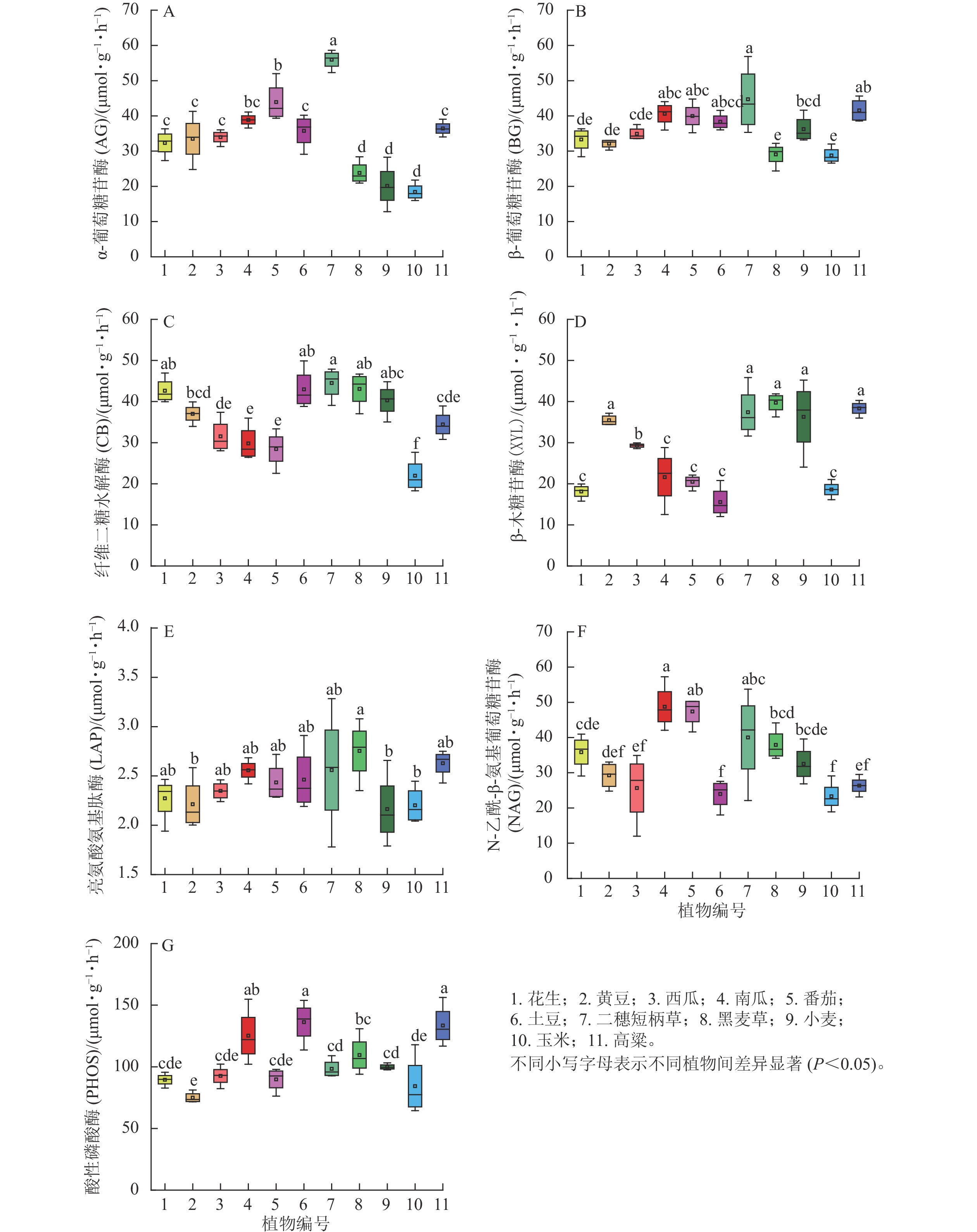
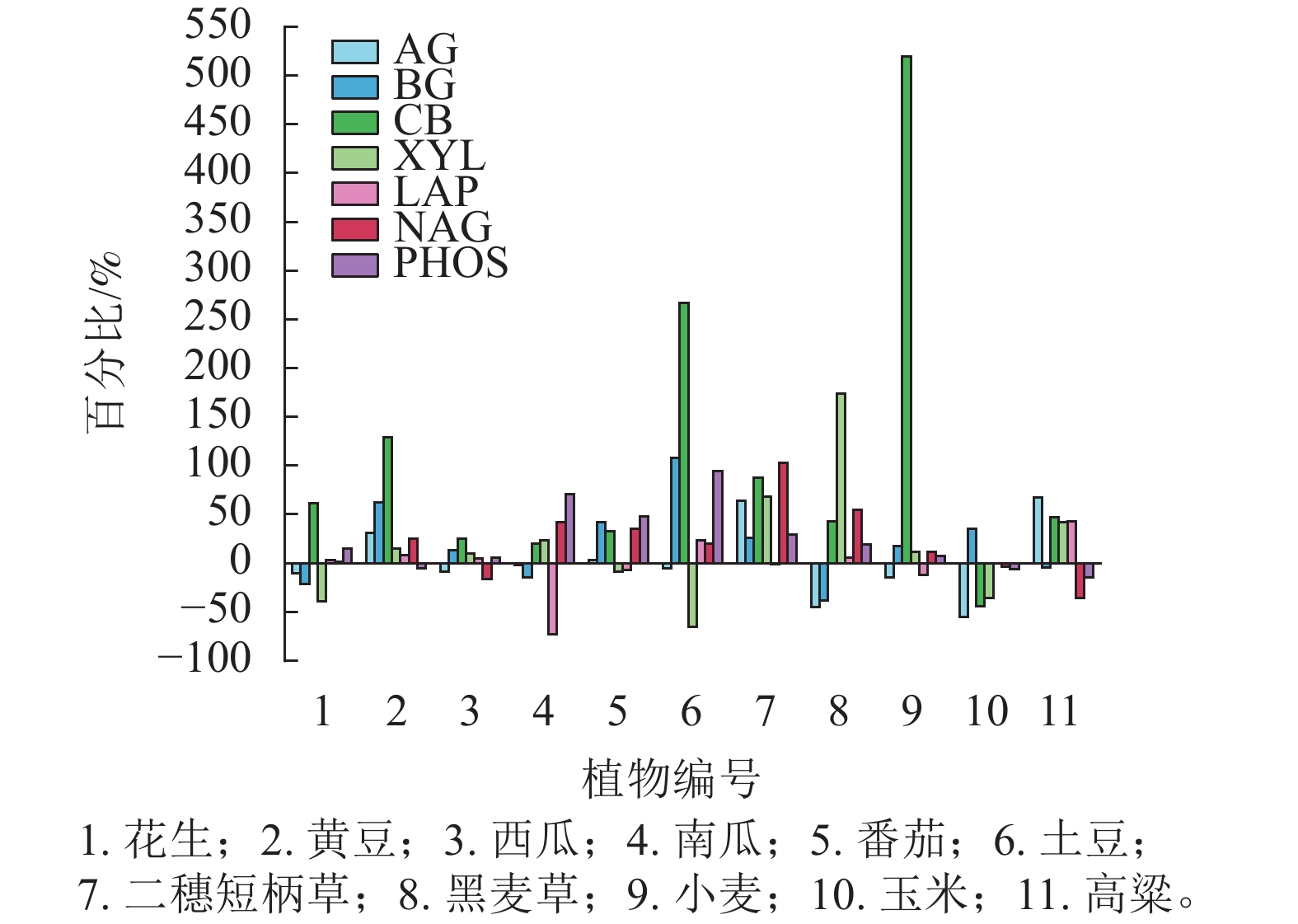
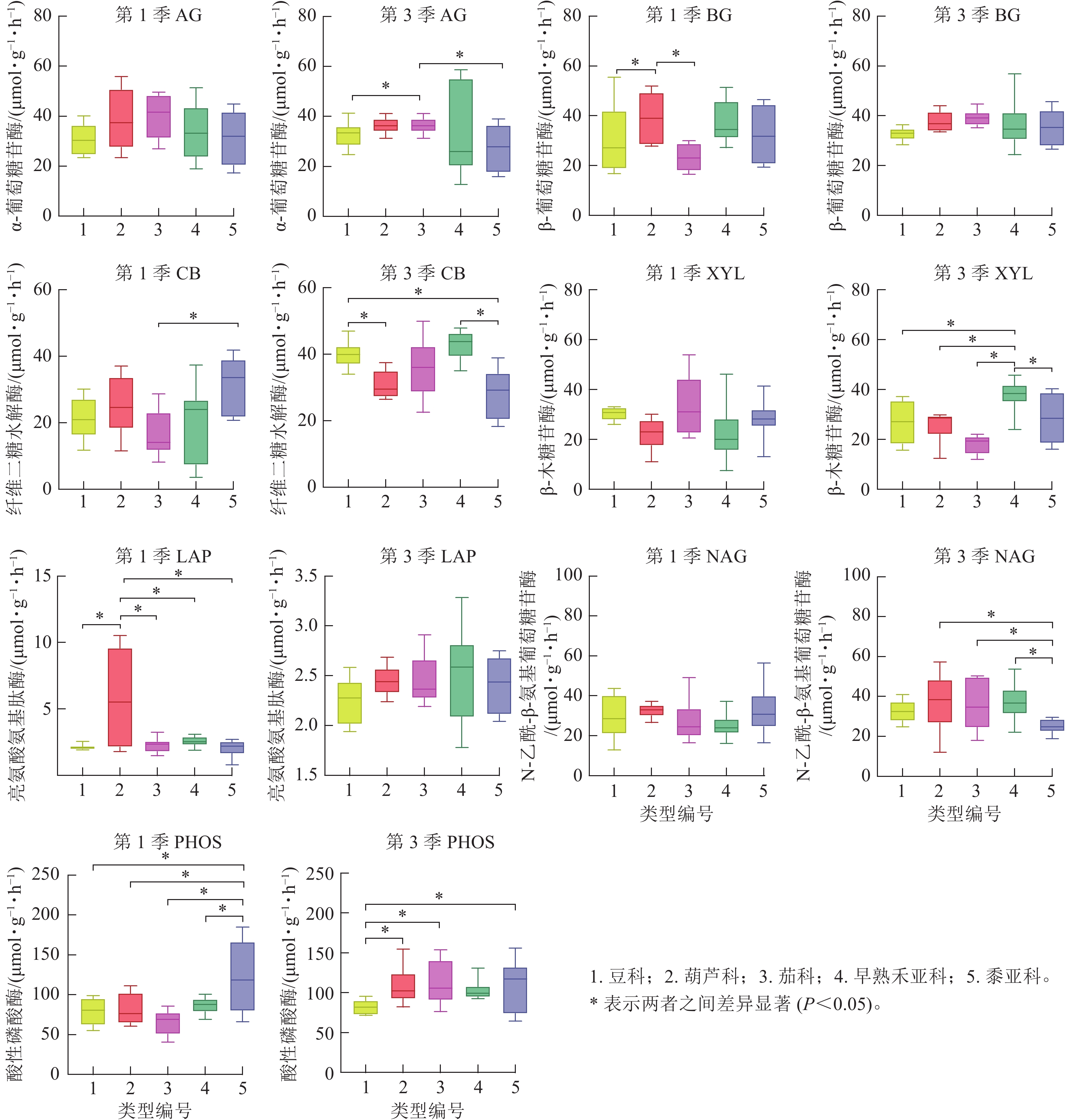
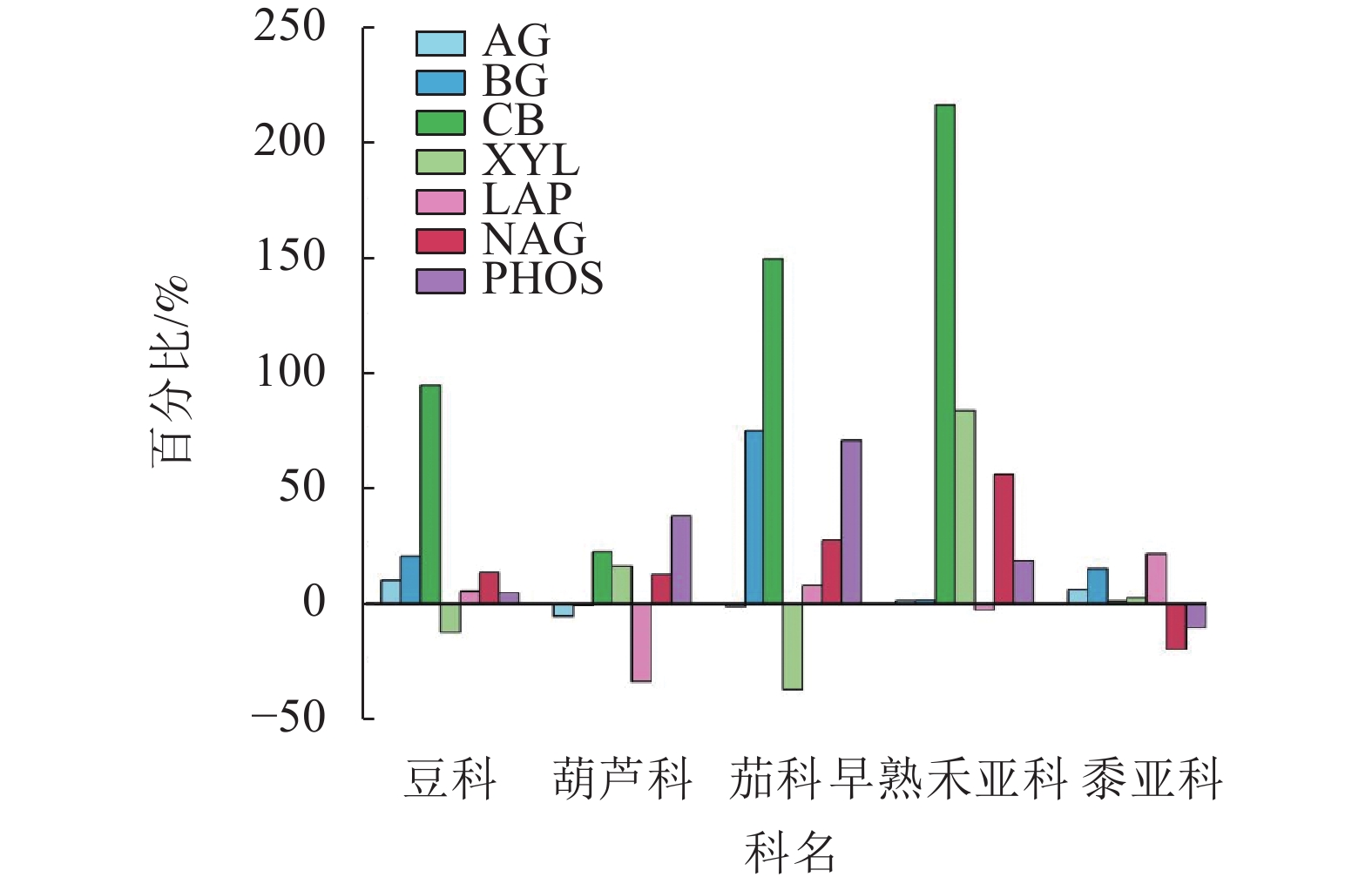
 下载:
下载:
